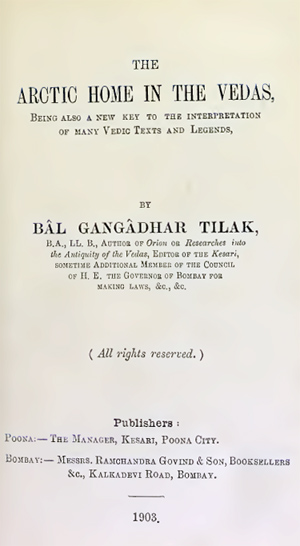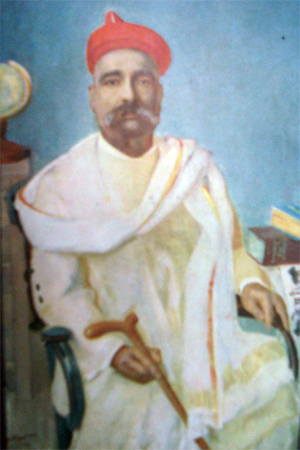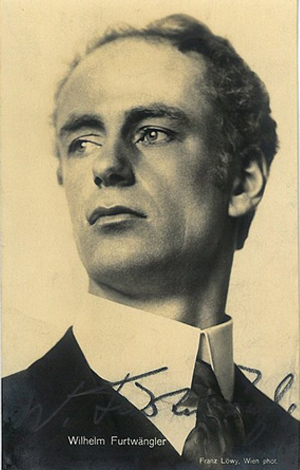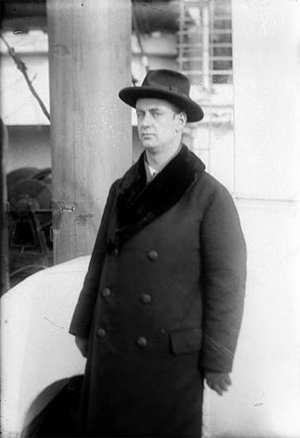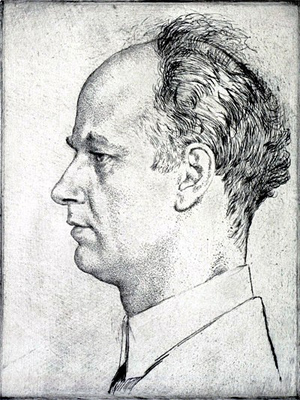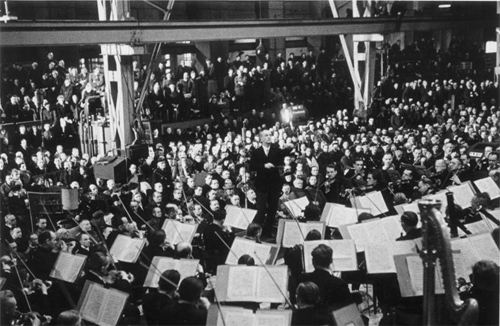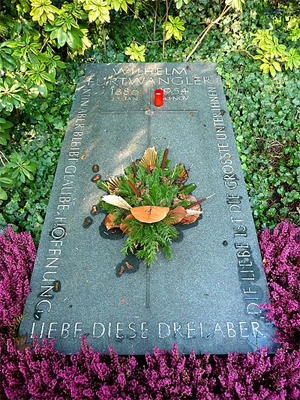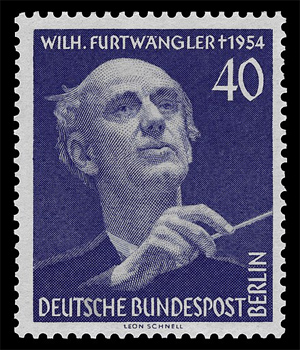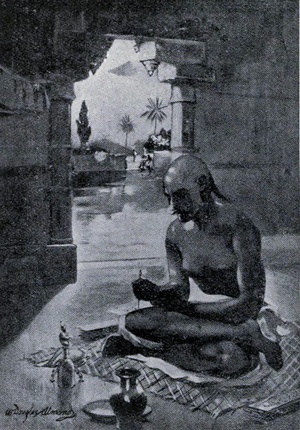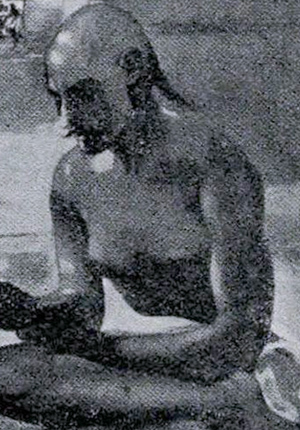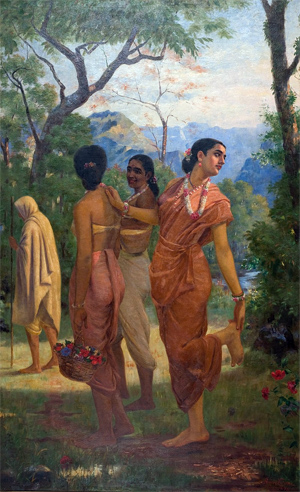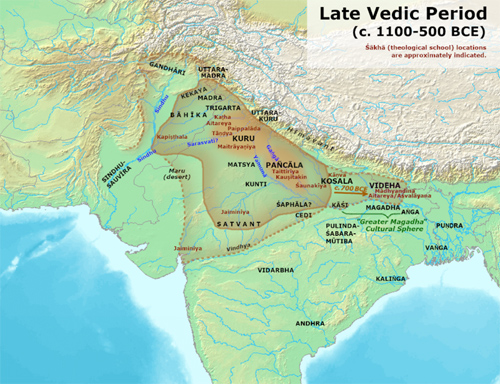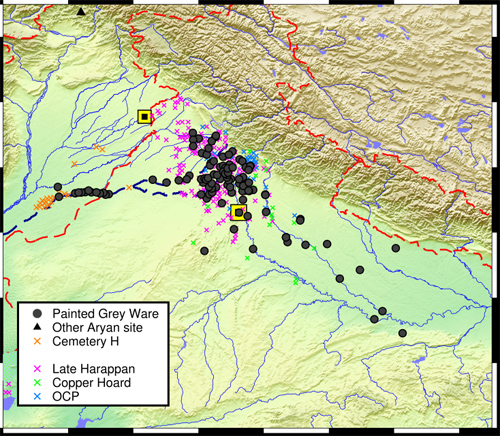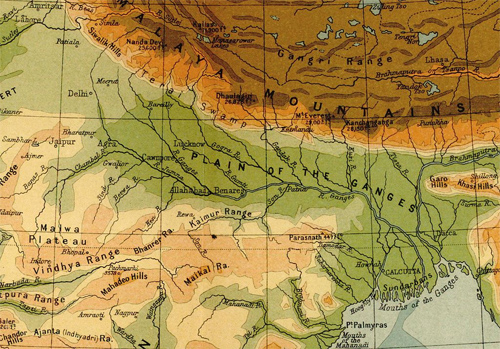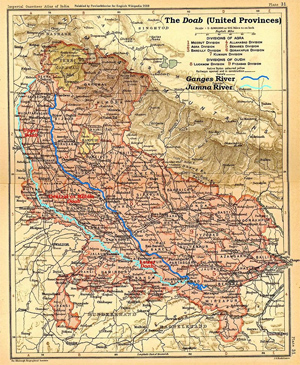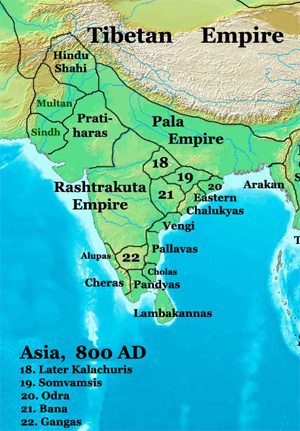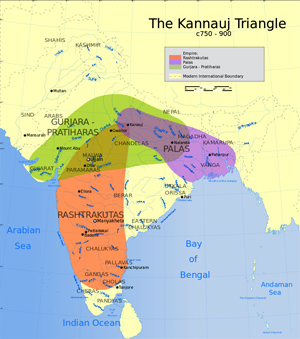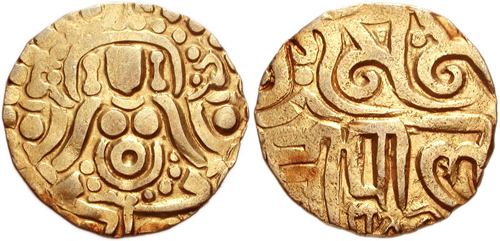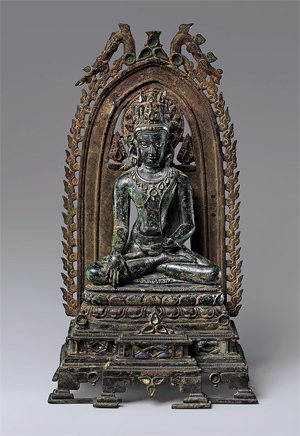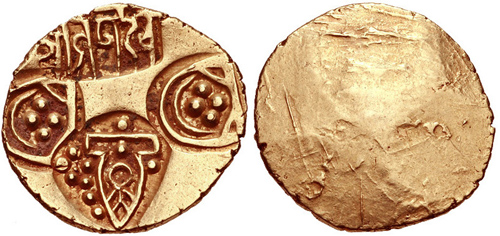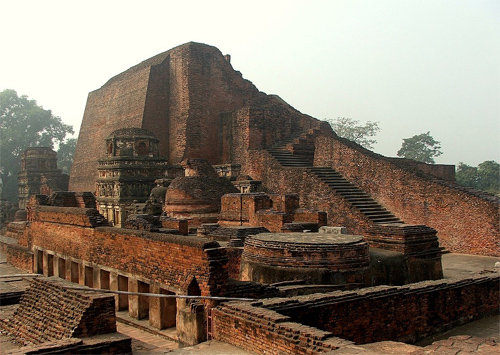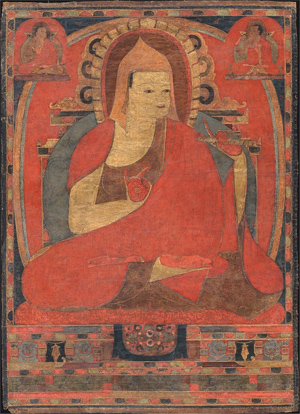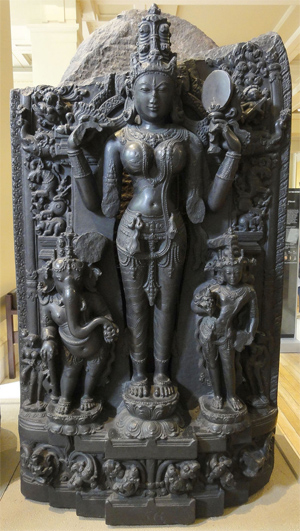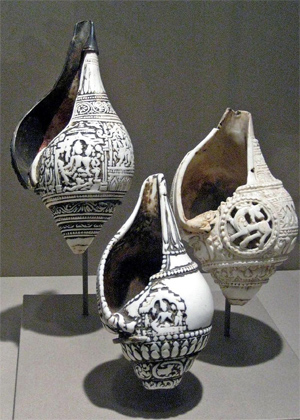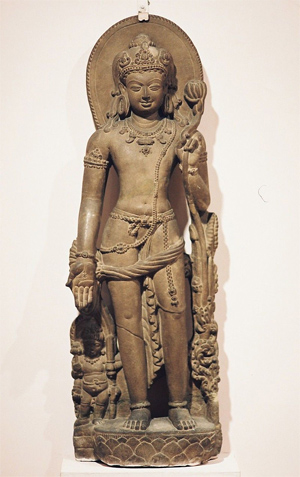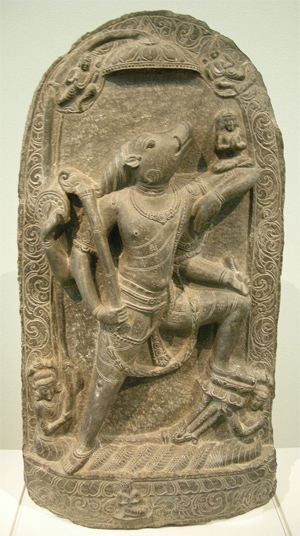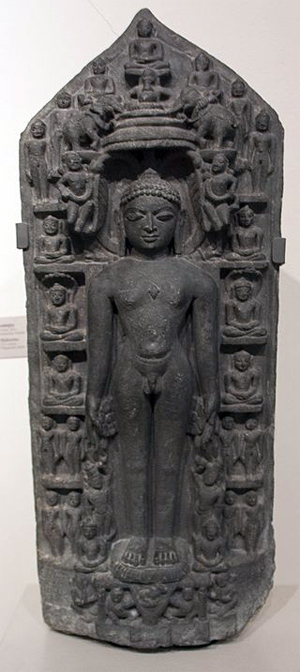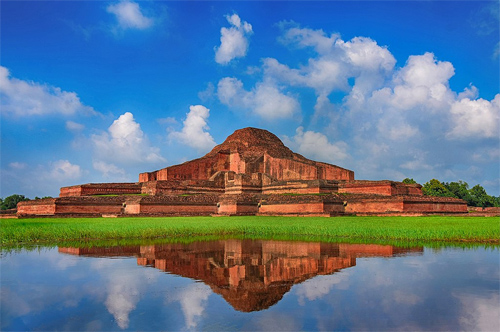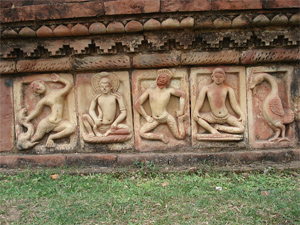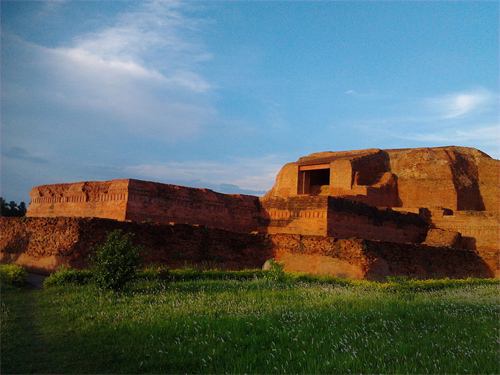Chapter 3: Facets of the Negro Problem [Color Caste], Excerpt from An American Dilemma: The Negro Problem and Modern Democracy
by Gunnar Myrdal
With the Assistance of Richard Sterner and Arnold Rose
1944
In 1880, Lajpat Rai joined Government College at Lahore to study Law, where he came in contact with patriots and future freedom fighters, such as Lala Hans Raj and Pandit Guru Dutt. While studying at Lahore he was influenced by the Hindu reformist movement of Swami Dayanand Saraswati, became a member of existing Arya Samaj Lahore (founded 1877) and founder editor of Lahore-based Arya Gazette.[7] [His journal Arya Gazette concentrated mainly on subjects related to the Arya Samaj.]
When studying law, he became a firm believer in the idea that Hinduism, above nationality, was the pivotal point upon which an Indian lifestyle must be based. He believed, Hinduism, led to practices of peace to humanity, and the idea that when nationalist ideas were added to this peaceful belief system, a secular nation could be formed...
Since childhood, he also had a desire to serve his country and therefore took a pledge to free it from foreign rule, in the same year he also founded the Hisar district branch of the Indian National Congress and reformist Arya Samaj with Babu Churamani (lawyer), three Tayal brothers (Chandu Lal Tayal, Hari Lal Tayal and Balmokand Tayal), Dr. Ramji Lal Hooda, Dr. Dhani Ram, Arya Samaj Pandit Murari Lal,[9] Seth Chhaju Ram Jat (founder of Jat School, Hisar) and Dev Raj Sandhir...
In 1914, he quit law practice to dedicate himself to the freedom of India and went to Britain in 1914 and then to the United States in 1917. In October 1917, he founded the Indian Home Rule League of America in New York. He stayed in the United States from 1917 to 1920...
Graduates of the National College, which he founded inside the Bradlaugh Hall at Lahore as an alternative to British institutions, included Bhagat Singh.[10] He was elected President of the Indian National Congress in the Calcutta Special Session of 1920...
While in America he had founded the Indian Home Rule League in New York and a monthly journal Young India and Hindustan Information Services Association. He had petitioned the Foreign affairs committee of Senate of American Parliament giving a vivid picture of maladministration of British Raj in India, the aspirations of the people of India for freedom amongst many other points strongly seeking the moral support of the international community for the attainment of independence of India. The 32-page petition which was prepared overnight was discussed in the U.S. Senate during October 1917.[13] The book also argues for the notion of "color-caste," suggesting sociological similarities between race in the US and caste in India.
-- Lala Lajpat Rai, by Wikipedia
Almost unanimously white Americans have communicated to the author the following logic of the caste situation which we shall call the "white man's theory of color caste."
(1) The concern for "race purity" is basic in the whole issue; the primary and essential command is to prevent amalgamation; the whites are determined to utilize every means to this end.
(2) Rejection of "social equality" is to be understood as a precaution to hinder miscegenation and particularly intermarriage.
(3) The danger of miscegenation is so tremendous that the segregation and discrimination inherent in the refusal of "social equality" must be extended to nearly all spheres of life. There must be segregation and discrimination in recreation, in religious service, in education, before the law, in politics, in housing, in stores and in breadwinning.
Chapter 3: Facets of the Negro Problem, Excerpt from An American Dilemma: The Negro Problem and Modern Democracy, by Gunnar Myrdal
[This study was made possible by funds granted by Carnegie Corporation of New York. That corporation is not, however, the author, owner, publisher, or proprietor of this publication, and is not to he understood as approving by virtue of its grant any of the statements made or views expressed therein. ]
FOREWORD
I have been asked to write a prefatory note for this book, because of the part played by the Carnegie Corporation in inaugurating the comprehensive study of which it is the outcome. In the public mind, the American foundations are associated with gifts for endowment and buildings to universities, colleges and other cultural and scientific institutions, and to a lesser degree with the financial support of fundamental research. It is true that a great part of the funds for which their Trustees are responsible have been distributed for these purposes, but the foundations do other things not so generally recognized. There are, for example, problems which face the American people, and sometimes mankind in general, which call for studies upon a scale too broad for any single institution or association to undertake, and in recent years certain foundations have devoted a considerable part of their available resources to the financing of such comprehensive studies.
The primary purpose of studies of this character is the collection, analysis and interpretation of existing knowledge; it is true that considerable research may prove necessary to fill the gaps as they reveal themselves, but such research is a secondary rather than a primary part of the undertaking as a whole. Provided the foundation limits itself to its proper function, namely to make the facts available and let them speak for themselves, and does not undertake to instruct the public as to what to do about them, studies of this kind provide a wholly proper and, as experience has shown, sometimes a highly important use of their funds.
As examples, we may take the inquiry and report of the Committee on the Costs of Medical Care (1928-1933), made possible by a group of foundations. Lord Hailey's memorable study, An African Survey, in the thirties was financed by the Carnegie Corporation. The significance of such undertakings cannot be measured by their cost. The volumes on the Poor Whites of South Africa, published in 1932, represent a relatively modest enterprise, but they have largely changed the thinking of the South Africans upon a social question of great importance to them.
While the underlying purpose of these studies is to contribute to the general "advancement and diffusion of knowledge and understanding," to quote the Charter of the Carnegie Corporation, it sometimes happens that a secondary factor, namely the need of the foundation itself for fuller light in the formulation and development of its own program, has been influential in their inception. This is true in the present case. The wide sweep of Andrew Carnegie's interests included the Negro, he gave generously to Negro institutions, and was closely identified with both Hampton and Tuskegee Institutes. The Corporation which he created maintained that interest, and during the years between its organization in 1911 and the inauguration of the present study, it made grants of more than two and one-half million dollars in direct response thereto.
In 1931, the late Newton D. Baker joined the Corporation Board. He was the son of a Confederate officer, attended the Episcopal Academy in Virginia and the Law School of Washington and Lee University, and spent the greater part of his early years in the Border states of West Virginia and Maryland. His services first as City Solicitor and later as Mayor of Cleveland gave him direct experience with the growing Negro populations in Northern cities, and as Secretary of War he had faced the special problems which the presence of the Negro element in our population inevitably creates in time of national crisis.
Mr. Baker knew so much more than the rest of us on the Board about these questions, and his mind had been so deeply concerned with them, that we readily agreed when he told us that more knowledge and better organized and interrelated knowledge were essential before the Corporation could intelligently distribute its own funds. We agreed with him further in believing that the gathering and digestion of the material might well have a usefulness far beyond our own needs.
The direction of such a comprehensive study of the Negro in America, as the Board thereupon authorized, was a serious question. There was no lack of competent scholars in the United States who were deeply interested in the problem and had already devoted themselves to its study, but the whole question had been for nearly a hundred years so charged with emotion that it appeared wise to seek as the responsible head of the undertaking someone who could approach his task with a fresh mind, uninfluenced by traditional attitudes or by earlier conclusions, and it was therefore decided to "import" a general director—somewhat as the late Charles P. Howland was called across the Atlantic to supervise the repatriation of the Greeks in Asia Minor after the close of the first World War. And since the emotional factor affects the Negroes no less than the whites, the search was limited to countries of high intellectual and scholarly standards but with no background or traditions of imperialism which might lessen the confidence of the Negroes in the United States as to the complete impartiality of the study and the validity of its findings. Under these limitations, the obvious places to look were Switzerland and the Scandinavian countries, and the search ended in the selection of Dr. Gunnar Myrdal, a scholar who despite his youth had already achieved an international reputation as a social economist, a professor in the University of Stockholm, economic adviser to the Swedish Government, and a member of the Swedish Senate. Dr. Myrdal had a decade earlier spent a year in the United States as a Fellow of the Spelman Fund, and when the invitation was extended to him by the Corporation in 1937, was about to make a second visit at the invitation of Harvard University to deliver the Godkin Lectures.
It was understood that he should be free to appoint and organize a staff of his own selection in the United States and that he should draw upon the experience of other scholars and experts in less formal fashion, but that the report as finally drawn up and presented to the public should represent and portray his own decisions, alike in the selection of data and in the conclusions as to their relative importance. Upon him rested the responsibility, and to him should go the credit for what I for one believe to be a remarkable accomplishment.
The difficulties of Dr. Myrdal's task, which would have been great enough in any event, were much increased by the outbreak of the present war. At a critical point in the development of the enterprise, he returned to Sweden to confer with his colleagues in the Government and the University, and only after nine months was he enabled to return by a long and circuitous route. Meanwhile, defense and war needs here had taken more and more of the time and energies of his collaborators. Despite all these difficulties, delays and complications, his task has now been completed and is presented in these volumes. The Carnegie Corporation is under deep and lasting obligation to Dr. Myrdal. The full degree of this obligation will be appreciated only when the material he has gathered and interpreted becomes generally known.
Though he has achieved an extraordinary mastery of the English language, Dr. Myrdal is not writing in his mother tongue. As a result, there is a freshness and often a piquancy in his choice of words and phrases which is an element of strength. Here and there it may lead to the possibility of misunderstanding of some word or some phrase. This is a risk that has been deliberately taken. It would have been possible for some American to edit the very life out of Dr. Myrdal's manuscript in an effort to avoid all possibility of offending the susceptibilities of his readers, but the result would have been a less vital and a far less valuable document than it is in its present form.
Thanks are also due to the Director's many associates and advisers, and in particular to Professor Samuel A. Stouffer and Dr. Richard Sterner, who during Dr. Myrdal's absence carried the burden of direction and decision, and to Messrs. Shelby M. Harrison, William F. Ogburn and Donald R. Young for their generously given editorial services in connection with the publication of some of the research memoranda prepared by Dr. Myrdal's collaborators.
When the Trustees of the Carnegie Corporation asked for the preparation of this report in 1937, no one (except possibly Adolf Hitler) could have foreseen that it would be made public at a day when the place of the Negro in our American life would be the subject of greatly heightened interest in the United States, because of the social questions which the war has brought in its train both in our military and in our industrial life. It is a day, furthermore, when the eyes of men of all races the world over are turned upon us to see how the people of the most powerful of the United Nations are dealing at home with a major problem of race relations. It would have been better in some ways if the book could have appeared somewhat earlier, for the process of digestion would then have taken place under more favorable conditions, but, be that as it may, it is fortunate that its appearance is no longer delayed.
I venture to close these introductory paragraphs with a personal word dealing with a matter upon which Dr. Myrdal himself has touched in his preface, but which I feel moved to state in my own words. It is inevitable that many a reader will find in these volumes statements and conclusions to which he strongly objects, be he white or colored, Northerner or Southerner. May I urge upon each such reader that he make every effort to react to these statements intellectually and not emotionally. This advice, I realize, is much more easy to give than to follow, but it is given with a serious purpose. The author is under no delusions of omniscience; as a scholar, he is inured to taking hard knocks as well as giving them, and he will be the first to welcome challenges as to the accuracy of any data he has presented, the soundness of any general conclusions he has reached, and the relative weight assigned by him to any factor or factors in the complicated picture he draws. Criticism and correction on these lines will add greatly to the value of the whole undertaking.
F. P. Keppel
December 15, 1942.
AUTHOR'S PREFACE
Late in the summer of 1957 Frederick P. Keppel, on behalf of the Trustees of the Carnegie Corporation of New York, of which he was then President, invited me to become the director of "a comprehensive study of the Negro in the United States, to be undertaken in a wholly objective and dispassionate way as a social phenomenon."
Our idea, so far as we have developed it, would be to invite one man to be responsible
for the study as a whole, but to place at his disposal the services of a group of associates, Americans, who would be competent to deal as experts with the anthropological, economic, educational and social aspects of the question, including public health and public administration.* [Letter from Mr. Frederick P. Keppel, August 12, 1937.]
After some correspondence and, later, personal conferences in the spring of 1938, when I was in the United States for another purpose, the matter was settled. It was envisaged that the study would require a minimum of two years of intensive work, but that it might take a longer time before the final report could be submitted.
On September 10, 1938, 1 arrived in America to start the work. Richard Sterner of the Royal Social Board, Stockholm, had been asked to accompany me. On Mr. Keppel's advice, we started out in the beginning of October on a two months' exploratory journey through the Southern states. Jackson Davis, of the General Education Board, who has behind him the experiences of a whole life devoted to improving race relations in the South and is himself a Southerner, kindly agreed to be our guide, and has since then remained a friend and an advisor.
We traveled by car from Richmond, Virginia, and passed through most of the Southern states. We established contact with a great number of white and Negro leaders in various activities; visited universities, colleges, schools, churches, and various state and community agencies as well as factories and plantations; talked to police officers, teachers, preachers, politicians, journalists, agriculturists, workers, sharecroppers, and in fact, all sorts of people, colored and white . . .
During this trip the State Agents for Negro Education in the various states were our key contacts. They were all extremely generous with their time and interest, and were very helpful.
The trip was an exploratory journey: we went around with our eyes wide open and gathered impressions, but did not feel ready, and in any case, had not the necessary time to collect in an original way data and material for the Study. The experience, however, was necessary. Without it our later studies will have no concrete points at which to be fixed.* [Memorandum to Mr. Keppel, January 28, 1939. ]
After a period of library work a first memorandum on the planning of the research to be undertaken was submitted to Mr. Keppel on January 28, 1939. It was later mimeographed, and I had, at this stage of the study, the advantage of criticisms and suggestions, in oral discussions and by letter, from a number of scholars and experts, among whom were: W. W. Alexander, Ruth Benedict, Franz Boas, Midian O. Bousfield, Sterling Brown, W. O. Brown, Ralph J. Bunche, Eveline Burns, Horace Cayton, Allison Davis, Jackson Davis, John Dollard, W. E. B. Du Bois, Edwin Embree, Earl Engle, Clark Foreman, E. Franklin Frazier, Abram L. Harris, Melville J. Herskovits, Charles S. Johnson, Guion G. Johnson, Guy B. Johnson, Eugene Kinckle Jones, Thomas Jesse Jones, Otto Klineberg, Ralph Linton, Alain Locke, Frank Lorimer, George Lundberg, Frank Notestein, Howard W. Odum, Frederick Osborn, Robert E. Park, Hortense Powdermaker, Arthur Raper, Ira DeA. Reid, E. B. Reuter, Sterling Spero, Dorothy Swaine Thomas, W. I. Thomas, Charles H. Thompson, Edward L. Thorndike, Rupert B. Vance, Jacob Viner, Walter White, Doxey A. Wilkerson, Faith Williams, Louis Wirth, L. Hollingsworth Wood, Thomas J. Woofter, Jr., Donald R. Young.
During the further planning of the study in terms of specific research projects and collaborators, Donald R. Young of the Social Science Research Council, Charles S. Johnson of Fisk University, and Thomas J. Woofter, Jr., then of the Works Progress Administration, were relied upon heavily for advice. Mr. Young, in particular, during this entire stage of the study, was continuously consulted not only on all major questions but on many smaller concerns as they arose from day to day, and he placed at my disposal his great familiarity with the field of study as well as with available academic personnel. Upon the basis of the reactions I had received, I reworked my plans and gradually gave them a more definite form in terms of feasible approaches and the manner of actually handling the problems. A conference was held at Asbury Park, New Jersey, from April 23 to April 28 inclusive, at which were present: Ralph J. Bunche, Charles S. Johnson, Guy B. Johnson, Richard Sterner, Dorothy S. Thomas, Thomas J. Woofter, Jr., and Donald R. Young. As a result of the conference I submitted to Mr. Keppel, in a letter of April 28, 1939, a more definite plan for the next stage of the study. The general terms of reference were defined in the following way:
The study thus conceived, should aim at determining the social, political, educational, and economic status of the Negro in the United States as well as defining opinion, held by different groups of Negroes and whites as to his "right" status. It must, further, be concerned with both recent change, and current trend, with respect to the Negro's position in American society. Attention must also be given to the total American picture with particular emphasis on relations between the two races. Finally, it must consider what changes are being or can be induced by education, legislation, interracial efforts, concerted action by Negro groups, etc.
Mr. Keppel, who from the start had given me the benefit of his most personal interest and advice, and who had followed the gradual development of the approach, gave his approval to the practical plans. Needed were a working staff, consisting of experts who could devote their whole time to the project, and, in addition, the collaboration of other experts to prepare research memoranda on special subjects. I was most fortunate in securing the cooperation needed. The following staff members were engaged, besides Richard Sterner: Ralph J. Bunche, Guy B. Johnson, Paul H. Norgren, Dorothy S. Thomas, and Doxey A. Wilkerson. Norgren did not join the staff until November I, 1939. Mrs. Thomas left the study on January 15, 1940, for another engagement. Outside the staff, the following persons undertook various research tasks, namely: M. F. Ashley-Montagu, Margaret Brenman, Sterling Brown, Barbara Burks, Allison Davis, J. G. St. Clair Drake, Harold F. Dorn, G. James Fleming, Lyonel C. Florant, E. Franklin Frazier, Herbert Goldhamer, Melville J. Herskovits, T. Arnold Hill, Eugene L. Horowitz, Eleanor C. Isbell, Charles S. Johnson, Guion G. Johnson, Dudley Kirk, Louise K. Kiser, Otto Klineberg, Ruth Landes, Gunnar Lange, T. C. McCormick, Benjamin Malzberg, Gladys Palmer, Arthur Raper, Ira DeA. Reid, Edward Shils, Bernhard J. Stern, Louis Wirth, T. J. Woofter, Jr. There were the following assistants to staff members and outside collaborators, who worked for various periods: Berta Asch, Lloyd H. Bailer, Louis Boone, Frieda Brim, Vincent Brown, William B. Bryant, Elwood C. Chisolm, Walter Chivers, Kenneth Clark, Belle Cooper, Lenore Epstein, Edmonia Grant, Louis O. Harper, James Healy, Mary C. Ingham, James E. Jackson, Jr., Wilhelmina Jackson, Anne De B. Johnson, Louis W. Jones, Alan D. Kandel, Simon Marcson, Felix E. Moore, Jr., Rose K. Nelson, Herbert R. Northrup, Edward N. Palmer, Lemuel A. Penn, Glaucia B. Roberts, Arnold M. Rose, George C. Stoney, Joseph Taylor, Benjamin Tepping, Harry J. Walker, Richard B. Whitten, Milton Woll, Rowena Wyant, and Walter Wynne. Mrs. Rowena Hadsell Saeger was the executive secretary of the study throughout this stage.
During the summer of 1939 I prepared a detailed plan for the study.* ["Memorandum on the Disposition of the Study on the American Negro." ] The work on the various research memoranda started gradually during the summer and fall of 1939, and I remained in close touch with all my collaborators. As I wanted to be able to corroborate, as far as possible, information in the literary sources and in the research memoranda being prepared for the study, by looking at interracial relations in various parts of the country with my own eyes, I continued to reserve as much of my time as possible for work in the field.
After the Germans had invaded Denmark and Norway in April, 1940, Mr. Keppel and I agreed that my duty was to go home to Sweden. Samuel A. Stouffer — who, meanwhile, had undertaken the responsibilities on the staff which Mrs. Thomas had left — agreed to take upon himself the burden of directing the project in my absence. Without reserve, he unselfishly devoted all his talents and all his energy to the task of bringing the research to completion by September 1, 1940, and he succeeded. I shall always remain in deep gratitude to Stouffer for what he did during those months and for the moral support he thereafter has unfailingly given me and the project.
Because of the delay in the completion of the work — and, indeed, the uncertainty as to whether I would ever be able to return to the task of writing a final report — the Corporation decided, in the fall of 1940, to facilitate the publication of some of the memoranda. A Committee to advise In the selection of those contributions most nearly ready for publication was appointed, consisting of Donald R. Young, Chairman, Shelby M. Harrison and William F. Ogburn. Samuel A. Stouffer served as Secretary to this committee. The following volumes have been published:
Melville J. Herskovits, The Myth of the Negro Past. New York: Harper & Brothers, 1941.
Charles S. Johnson, Patterns of Negro Segregation. New York: Harper & Brothers, 1943.
Richard Sterner, The Negro's Share. New York: Harper & Brothers, 1943.
A fourth volume is to be published later:
Otto Klineberg, editor, Characteristics of the American Negro. New York: Harper & Brothers.
This volume contains the following research memoranda, the manuscripts of which will be deposited in the Schomburg Collection of the New York Public Library.
Otto Klineberg, "Tests of Negro Intelligence," "Experimental Studies of Negro Personality."
Benjamin Malzberg, "Mental Disease among American Negroes: A Statistical Analysis."
Louis Wirth and Herbert Goldhamer, "The Hybrid and the Problem of Miscegenation."
Eugene L. Horowitz, "'Race' Attitudes."
Gny Johnson, "The Stereotypes of the American Negro."
The following unpublished manuscripts, prepared for the study — after some provision has been made to preserve the authors' rights — are being deposited in the Schomburg Collection of the New York Public Library where they will be available for scientific reference:* [In addition to the unpublished research memoranda listed, the following material is also deposited in the Schomburg Collection: (1) Memorandum to Mr. Keppel, January 28, 1939 (containing the first plan of the Study); (2) Memorandum to the Staff, "Disposition of the Study on the American Negro," September 10, 1939 (containing the definitive research program); (3) Memorandum to the Staff, "Main Viewpoints and Emphases of the Study," February 8, 1940; (4) Memorandum to the Staff, "Preparation of Manuscripts," February 8, 1940; and (5)Memorandum to the Staff, "Bibliographies," October 31, 1939.]
M. F. Ashley-Montagu, "Origin, Composition and Physical Characteristics of the American Negro Population."
Margaret Brenman, "Personality Traits of Urban Negro Girls."
Sterling Brown, "The Negro in American Culture" (fragment).
Ralph Bunche, "Conceptions and Ideologies of the Negro Problem," "The Programs, Ideologies, Tactics, and Achievements of Negro Betterment and Interracial Organizations," "A Brief and Tentative Analysis of Negro Leadership," "The Political Status of the Negro."
Barbara Burks, "The Present Status of the Nature-Nurture Problem as It Relates to Intelligence."
Allison Davis, "Negro Churches and Associations in the Lower South."
Harold F. Dorn, "The Health of the Negro."
J. G. St. Clair Drake, "Negro Churches and Associations in Chicago."
G. James Fleming, "The Negro Press."
Lyonel C. Florant, "Critique of the Census of the United States," "Negro Migration — 1860-1940" (revised edition, 1942, of the Stouffer-Florant manuscript).
E. Franklin Frazier, "Recreation and Amusement among American Negroes," "Stories of Experiences with Whites."
T. Arnold Hill, "Digest and Analysis of Questionnaires Submitted by Urban League Secretaries for 'The Negro in America.' Churches and Lodges, Negro Business and Businessmen, Racial Attitudes, Recreation and Leisure Time."
E. C. Isbell, "The Negro Family in America," "Statistics of Population Growth and Composition."
Guion G. Johnson, "A History of Racial Ideologies in the United States with Reference to the Negro."
Guion G. Johnson and Guy B. Johnson, "The Church and the Race Problem in the United States."
Guy B. Johnson and Louise K. Kiser, "The Negro and Crime."
Dudley Kirk, "The Fertility of the Negro."
Ruth Landes, "The Ethos of the Negro in the New World."
Gunnar Laage, "Trends in Southern Agriculture," "The Agricultural Adjustment Program and the Negro" (fragment).
T. C. McCormick, "The Negro in Agriculture."
Benjamin Malzberg, "A Study of Delusions among Negroes with Mental Diseases."
Paul Norgren, "Negro Labor and Its Problems."
E. Nelson Palmer, "A Note on the Development of Negro Lodges in the United States."
Arthur Raper, "Race and Class Pressures."
Ira DeA. Reid, "The Negro in the American Economic System."
Edward A. Shils, "The Bases of Social Stratification in Negro Society."
Bernhard J. Stern, "The Negro in Adult Education."
Samuel A. Stouffer and Lyonel C. Florant, "Negro Population and Negro Population Movements: 1860-1940, in Relation to Social and Economic Factors."
Doxey Wilkerson, "The Negro in American Education" (fragment).
T.J. Woofter, Jr., "The Negro and Agricultural Policy."
The Advisory Committee appointed by the Corporation has gone through all the published and unpublished memoranda listed above. Coming to the material from outside and viewing it with fresh eyes, the Committee felt justified in giving the following appraisal:
The Committee found that every manuscript submitted offered significant contributions. In serving the purposes of the Study so well, the contributors necessarily subordinated their individual publication interests to the interests of the central project. This is evidence of unselfish team-play which deserves respect and commendation.* [Foreword by the Committee to: Melville J. Herskovits, The Myth of the Negro Past (1941), p. x.]
To this high appreciation, which needs no amplification on my part, I want to add some words of personal gratitude to my colleagues in the first stage of the study. The collaboration in the study -- which embraced, in friendship and concerted efforts, white and Negro men and women of different specialties, ages, and previous accomplishments -- gave more than is contained in the 15,000 typewritten pages of manuscript. Even about the specific problems of race relations, which we were studying together, I learned much more from our informal conferences than I can ever duly account for in this book.
To Mrs. Rowena Hadsell Saeger I remain grateful for her great devotion and, specifically, for the efficient manner in which she relieved me of much office work in directing the study, thereby allowing me to use much of the year for continuing my field trips.
The National Association for the Advancement of Colored People, The Urban League, The Commission for Interracial Cooperation, private and public research institutions, several branches of the federal government, and state and municipal authorities in different parts of the country, and, in addition, a great number of individuals, have aided me and my collaborators to an extent which makes any detailed acknowledgment difficult.
The first stage of the study closed with the completion of the several research memoranda which are published or, in unpublished form, are made available for students of the Negro problem.
The second stage of the study began when I returned to America on March 6, 1941. In writing the present book, which has been produced during this second stage, I have utilized the unpublished manuscripts, prepared for the study during its first stage, in the same manner as I have used the printed literature. I have, therefore, had frequent occasion to cite them. As a glance at the footnotes will reveal, the unpublished manuscripts on which I have relied most heavily are those by Bunche, Norgren, Raper, Stouffer and Florant, and, in the next place, those of Dorn, Drake, Kirk and Lange. I have, of course, depended upon the printed literature to an even greater extent than upon the specially prepared monographs. Much of the library work was done during the summer of 1941 in the excellent Baker Library of Dartmouth College, Hanover, New Hampshire. Use was also made of the Columbia University Library, the New York Public Library, the Princeton University Library and the Russell Sage Foundation's library. I have also drawn upon my person observations of conditions and attitudes in various parts of the country and upon the observations of Sterner and Rose. Most of the book was written in Princeton, New Jersey.
In September, 1941, I was joined by Richard Sterner and Arnold Rose, whose names rightly appear on the title page as assistants. Richard Sterner has been my associate in this work from the first day. Together we explored the Negro problem in America, which was so new and foreign to us both, and together we discussed the task to be accomplished. Sterner assisted in an essential way in outlining the program for the first stage of the work. Besides the special investigation of the Negro's standard of living, which he later undertook as one of the staff members and which resulted in his now published book, The Negro's Share: In Income, Consumption, Housing and Public Assistance, he kept, upon my request, a general interest and a general responsibility for the wider economic problems of the Negro in America. For the present book he has prepared manuscripts in draft form for nine chapters in Part IV on economic problems. Appendix 6, "Pre-War Conditions of the Negro Wage Earner in Selected Industries and Occupations," is written by him. He has carefully gone through the several succeeding drafts of other parts of the book and has given me criticism which has not only referred to details but often to fundamental views and arrangement. For the final shape of Part V on the political problems, for instance, his criticism has been of greatest importance since it has led me to stress, much more than I had succeeded in doing in a first draft, the elements of actual and pending change in the political scene of the South. His critique of this and other parts has had a specific functional value for the writing of this book, as he, being a stranger like myself and having the same cultural background, was inside the points of view which have been applied throughout the work. I should also mention that when statements in this book are made in a conjectural form and based on personal observations, these observations are often made by Sterner or by both Sterner and myself.
Arnold Rose has prepared drafts for Chapters 5, 6, 7, and 8 on problems connected with race and population, Chapter 22 on the present political scene, Chapter 29 on the patterns of discrimination, Chapters 41 and 42 on church and education, and Appendices 4, 7 and 8. He has also prepared drafts for many sections of other chapters. For still other chapters he has assembled data and filled in gaps. For the final formulation of the main methodological analysis in Appendix 2 on facts and values in social science, his contribution has been of great importance. He has read the manuscripts of all parts and edited them. His editing work has included much more than polishing the English. It has, rather, been a most conscientious checking of basic data as well as of inferences, and a critical consideration of arrangement, viewpoints and conclusions. Both his criticisms and suggestions have, with few exceptions, led to changes in the final manuscript, and many of these changes are important. His wide knowledge of the social science literature and his sound judgment on methodological problems have, in this critical work, been significant. When I delivered the manuscript and departed from America, there was still a great deal of checking to be done and gaps to be filled in for which he was responsible, as well as for the proof reading. He also had to write Chapters 43 and 44, on the Negro community and culture, and Sections 1 and 4 of Appendix 10. For the present form of these two chapters and the appendix, Rose is himself responsible.
About the contributions of both Sterner and Rose I want to add the following. The size of the book, and still more the scope of the problems involved, will make it understandable even to the reader who is not himself familiar with many of the specific fields, that the work done has been immense. We have had to dig deep into primary sources in many fields of social science and a major part of this digging has been done by them. The collaboration, which stretched ruthlessly over evenings and weekends, has been a sheer pleasure to me, as I have felt more than I have ever experienced before the stimulation of an ideal cooperation where we not only added together the results of our labor but imagined that we in our concerted endeavors sometimes reached higher than an arithmetical sum. A similar outlook on the methodological problems of social science and a mutually shared scientific curiosity in seeing our structure of hypothesis, data, and conclusion rise, have given to our collaboration a spirit of intellectual exploration which I will not soon forget.
To Miss Ruth Moulik, who has been our secretary and who will continue to stay with the book until it has come through the press, we are grateful for her skill and great devotion. Besides the responsibility for the office and, particularly, for the typing and checking of the manuscript, she has helped us by statistical computations, by digging up sources in the library, by checking statistical data and quotations, and in many other ways.
In the last, hectic stage of the study, from September through December, 1942, Caroline Baer Rose was a member of the little group of three who had to carry on after Sterner and I departed for Sweden. She worked unselfishly through all hours, including evenings and weekends, and brought to the study her frank personality and broad background. She assisted Mr. Rose in checking data and filling in gaps and was especially helpful in doing these things on the economics part. She also wrote the first draft of Chapter 44, Section 4, on "Recreation."
Before making my final revision of the manuscript I have had the invaluable help of having it read critically and carefully by two friends who are at the same time outstanding social scientists with a great familiarity with the problems treated in the book: Professors E. Franklin Frazier of Howard University and Louis Wirth of the University of Chicago. They have not spared any effort, and as a result I have had their criticisms and suggestions often from page to page, referring to everything from the syntax and the arrangement of chapters and appendices to fundamental problems of approach and to conclusions. In my revision nearly every point raised by them has caused omissions, additions, rearrangements, clarifications or other alterations. Paul H. Norgren has read Appendix 6 and a first draft of Chapter 19. Gunnar Lange has read Chapters 10 to 12 and a first draft of Chapter 18. The final manuscript has benefited by their criticism. Alva Myrdal has read various chapters; her criticism of Appendix 1 and Chapter 41 on Negro education has been particularly valuable.
The relation of the study to the Carnegie Corporation of New York must be accounted for. The study has an unusual character as it was not initiated by any individual scholar or academic institution but sponsored by the Carnegie Corporation itself and, in a sense, carried out within the Corporation. The general plan that a number of American experts should be asked to collaborate by preparing research monographs while the director himself should write a final report, was also developed by the Corporation. All decisions on practical and financial matters have been taken on the responsibility of the Corporation. The Trustees of the Corporation have been most generous and prompt in appropriating necessary funds for the study.
Mr. Keppel has had to keep in closer touch with the progress of the work than is usual when a study is sponsored by an outside institution. No conventional words of appreciation can express what his unfailing personal interest in the project has meant in upholding the courage of the present author throughout his tribulations. Charles Dollard, the Assistant to the President of the Carnegie Corporation, has followed the work in all its practical details and has, with Keppel, contributed most in terms of moral support and advice. Both Keppel and Dollard have read the manuscript and given me their criticisms and suggestions, which have been very valuable.
For the content of the book, I am solely responsible.
The scope and main direction of this book will be explained in the "Introduction." There are, however, some few notes of a more personal character for which the proper place is at the close of this preface. To invite a foreigner — someone "in a nonimperialistic country with no background of domination of one race over another" who, presumably "would approach the situation with an entirely fresh mind"; I am here again quoting Keppel's first letter, August 12, 1937 — to review the most serious race problem in the country, is an idea singularly American. In any other country such a proposal would have been defeated by afterthoughts of practical and political expediency. Many will deem it a foolish idea. But more fundamentally it is a new demonstration, in a minor matter, of American moralism, rationalism, and optimism — and a demonstration of America's unfailing conviction of its basic soundness and strength. Early in the course of this work, when I had found out the seriousness of the task before me, I proposed to Mr. Keppel that a committee be formed of a Southern white, a Northern white, and a Negro. In such a group we could have allowed for political considerations and worked out a basis for practical understanding, to which each one could have subscribed, since the representation of different viewpoints would have accounted for the intellectual compromises involved. This was, however, not at all what he wanted. He told me that everyone would generously help and advise me — and there he proved right — but that I would have to find out for myself, and upon my own responsibility, the truth in the- matter without any side glances as to what was politically desirable and expedient.
This book is the result. Let it be added at once that the author does not have any pretension of having produced the definitive statement of the Negro problem in America. The problem is too big and too complicated, and also things are rapidly changing while one writes. Time has, as always, been a limitation. When I now leave the work, I know that many chapters could be improved. But apart from such shortcomings, there is a more basic relativism which the reader should keep in mind. Things look different, defending upon "where you stand" as the American expression runs. The author fully realizes, and hopes the reader will remember, that he has never been subject to the strains involved in living in a black-white society and never has had to become adjusted to such a situation — and that this condition was the very reason why he was asked to undertake the work. He was requested to see things as a stranger. Indeed, he was asked to be both the subject and the object of a cultural experiment in the field of social science.
As he, in this problem — to which he previously had given hardly a thought — was nearly stripped of all the familiar and conventional moorings of viewpoints and valuations, he had to construct for himself a system of coordinates. He found this in the American ideals of equality and liberty. Being a stranger to the problem, he has had perhaps a greater awareness of the extent to which human valuations everywhere enter into our scientific discussion of the Negro problem. In two appendices on valuations, beliefs, and facts he has attempted to clear the methodological ground for a scientific approach which keeps the valuations explicit and hinders them from going underground in the form of biases distorting the facts. And he has followed the rule all through the book of inserting the terms "the American Creed" and "value premise" and of specifying those value premises and printing them in italics. The reader will be less irritated by their repetition if he understands that these terms are placed as signs of warning to the reader and to the writer alike: the search for scientific knowledge and the drawing of practical conclusions are dependent upon valuations as well as upon facts.
When, in this way, the data on the American Negro problem are marshaled under the high ideals of the American Creed, the fact must be faced that the result is rather dark. Indeed, as will be pointed out in the first chapter, the Negro problem in America represents a moral lag in the development of the nation and a study of it must record nearly everything which is bad and wrong in America. The reading of this book must be somewhat of an ordeal to the good citizen. I do not know if it can be offered as a consolation that the writing of the book, for much the same reason, has been an ordeal to the author who loves and admires America next to his own country — and does it even more sincerely after having had to become an expert on American imperfections. To a scholar a work is always something of a fate. His personal controls are diminutive; he is in the hands of the facts, of his professional standards, and of the fundamental approach chosen.
If this book gives a more complete record than is up to now available of American shortcomings in this field, I hope, however, that it also accounts more completely for the mutability in relations, the hope for great improvement in the near future and, particularly, the dominant role of ideals in the social dynamics of America. When looking back over the long manuscript, one main conclusion — which should be stressed here since it cannot be reiterated through the whole book — is this: that not since Reconstruction has there been more reason to anticipate fundamental changes in American race relations, changes which will involve a development toward the American ideals.
To the friends, colleagues, experts, and administrators of both races who have been helpful to me in the course of this study, 1 want to say plainly that in a job of this kind the attempt to be completely honest involves the author in the risk of losing friends. If this does not happen in the present instance, I shall ascribe this to the singular American magnanimity which is demonstrated in the very initiative of calling for this study.
GUNNAR MYRDAL
Stockholm, October, 1942
University of Stockholm

